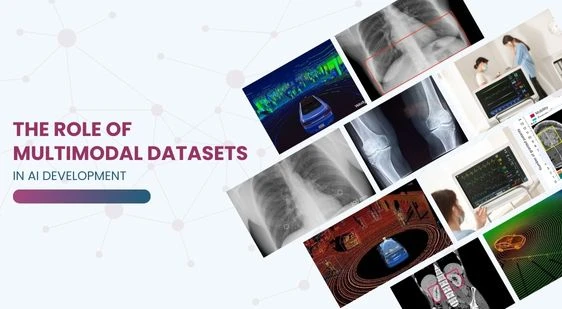AI is becoming a part of our everyday lives. From voice assistants to self-driving cars, AI systems must work in real-world settings. To do this, they need more than just one type of data. Like humans, who use sight, sound, and touch, AI needs a mix of inputs to truly understand its environment. This is where multimodal datasets become essential.
Here’s why multimodal datasets matter:
Enhanced Understanding
AI trained only on text can miss key context. But when you combine images with text or audio with video, the system learns faster and performs better. For example, in healthcare, AI can review both written reports and MRI images. This leads to more accurate diagnoses and better patient outcomes.
Improved Interaction
Multimodal data allows AI to understand and respond in a natural way. Think of virtual assistants like Siri or Alexa. They process voice input and respond using speech, text, or even visuals. This makes conversations smoother and more useful.
Better Performance
When AI systems use data from multiple sources, they make smarter choices. For instance, self-driving cars rely on cameras, GPS, and LiDAR sensors. These different inputs help the car understand its surroundings and navigate safely.
Real-World Applications of Multimodal AI
Let’s look at some real-world applications where multimodal datasets enhance AI systems:
Healthcare
Doctors use a mix of medical reports, scans, and real-time data from monitors. AI systems trained on such data can detect problems earlier and suggest better treatments.
Self-Driving Cars
Self-driving cars need to “see” and “feel” the road. They use images, radar, and location data together. This helps them avoid accidents and respond to changes quickly.
Customer Support Chatbots
Some chatbots analyze both text and voice. They can also pick up on emotions from tone of voice. This makes the support experience more personal and helpful.
Social Media Monitoring
Social media platforms use AI to detect harmful content. By analyzing both images and text, they can spot threats faster and more accurately.
Challenges of Using Multimodal Datasets
While multimodal datasets provide many advantages, they also come with their own set of challenges:
Data Collection and Integration
Gathering different types of data and syncing them correctly takes time and care. It often requires manual work and expert oversight.
Processing Power
Handling large and mixed data types demands more computing power. Smaller teams may find it hard to manage without the right tools.
Data Quality
If the data is blurry or incomplete, the AI might make mistakes. It’s vital to filter out poor-quality content before training begins.
The Future of Multimodal Datasets in AI
Real-World Data Collection
At GTS.AI, we manually collect all data using devices such as:
Smartphones
Webcams
CCTV cameras
DSLRs
This approach ensures a wide range of image quality, lighting conditions, and environmental factors.
We also ensure diversity by collecting data from:
Multiple countries
Different age groups, ethnicities, and genders
A variety of face conditions like masks, makeup, eyewear, and facial hair
Expert Annotation
Our data labeling includes:
Facial landmarking
Bounding boxes
Emotion tags
Pose estimation
Each dataset is checked through several quality control layers. We use both in-house tools and client systems to ensure accuracy.
Security, Compliance, and Formats
Your data is secure with us. We follow:
GDPR and HIPAA guidelines
ISO 9001:2015 (Quality Management)
ISO 27001:2013 (Information Security)
We filter out duplicates, blurred images, and irrelevant files. Data is stored securely and shared in formats like JSON, COCO, or XML, depending on your needs.
Conclusion
AI models perform best when trained on real, diverse, and well-structured data. Multimodal datasets give your systems the context they need to make smart, safe, and reliable decisions.
Partner with GTS.AI to access secure, ethically sourced, and richly annotated multimodal datasets.
Contact us today for a free consultation or dataset sample.







